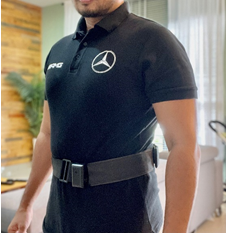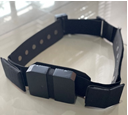

PI2021007268
The concept of wearable haptic-feedback assistive navigation device is designed mainly for older adults with cognitive impairment such as due to dementia. Visual instruction such as reading a map display is quite common for wayfinding or navigational assistance. However, this technique is not always suitable, especially in the situation where vision is limited.
For normal elderly with or without cognitive impairment and visually impaired people, vision is the most effected sensory. Hence, relying on visual mapping or map display is not appropriate for this situation. The device system integrates haptic stimuli as the signals and this concept of navigation provides the simplest possible information about the navigational instruction which is the left, right and forward directions.
The uncomplicated feature is crucial as to avoid distraction or confusion by the users during wayfinding tasks. The device is designed to be in a wearable form and worn like a belt. It is equipped with series of mini vibration motors that creates the haptic stimuli in form of waves. These waveform haptic-feedback helps to drive the users in taking the right turn during navigation.
The device system comes with the integrated mobile application meant to monitor the users when the device is in use. The apps allow their activities and visited places to be monitored and are recorded in the system. This eventually increases users’ independency, while at the same time embracing the new norm of current pandemic situation.
Advantages
The wearable haptic-feedback assistive navigational device is useful in the situations where the visual display is not appropriate. The waveform haptic signal helps to drive the users in during navigation and wearable aspect increases its efficiency.
This device is also designed to enable the monitoring and supervision of the users through the integration of mobile application. The real-time location information when the device is in use can be viewed and monitored through the developed apps. Generally, this wearable assistive navigational device:
- Provides alternative towards conventional navigations or wayfinding techniques
- Does not rely on visual instruction or reading a map display
- Can be a good form of therapy
- Is easy to be used or user-friendly
- Is wearable, lightweight and practical
- Reduces the dependency of users
Inventor
Ts Dr Rosalam Che Me
Department of Industrial Design
Faculty of Design and Architecture
rosalam@upm.edu.my
Date of Input: 17/05/2022 | Updated: 17/05/2022 | asrizam
MEDIA SHARING


























